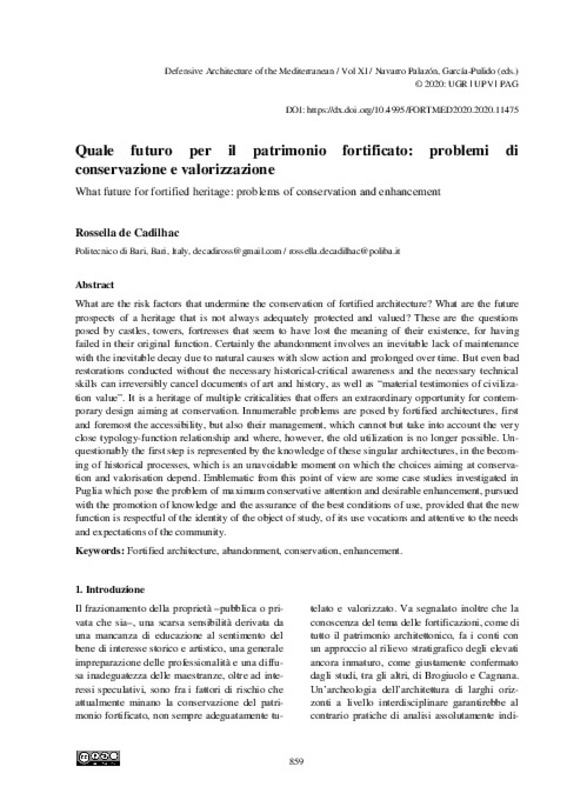JavaScript is disabled for your browser. Some features of this site may not work without it.
Buscar en RiuNet
Listar
Mi cuenta
Estadísticas
Ayuda RiuNet
Admin. UPV
Quale futuro per il patrimonio fortificato: problemi di conservazione e valorizzazione
Mostrar el registro completo del ítem
De Cadilhac, R. (2020). Quale futuro per il patrimonio fortificato: problemi di conservazione e valorizzazione. Editorial Universitat Politècnica de València. 859-866. https://doi.org/10.4995/FORTMED2020.2020.11475
Por favor, use este identificador para citar o enlazar este ítem: http://hdl.handle.net/10251/146746
Ficheros en el ítem
Metadatos del ítem
| Título: | Quale futuro per il patrimonio fortificato: problemi di conservazione e valorizzazione | |
| Autor: | de Cadilhac, Rossella | |
| Fecha difusión: |
|
|
| Resumen: |
[EN] What are the risk factors that undermine the conservation of fortified architecture? What are the future
prospects of a heritage that is not always adequately protected and valued? These are the questions
posed by ...[+]
|
|
| Palabras clave: |
|
|
| Derechos de uso: | Reconocimiento - No comercial - Sin obra derivada (by-nc-nd) | |
| ISBN: |
|
|
| DOI: |
|
|
| Editorial: |
|
|
| Versión del editor: | http://ocs.editorial.upv.es/index.php/FORTMED/FORTMED2020/paper/view/11475 | |
| Título del congreso: |
|
|
| Lugar del congreso: |
|
|
| Fecha congreso: |
|
|
| Tipo: |
|








